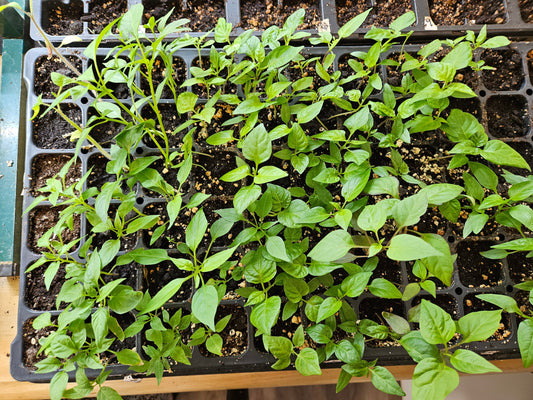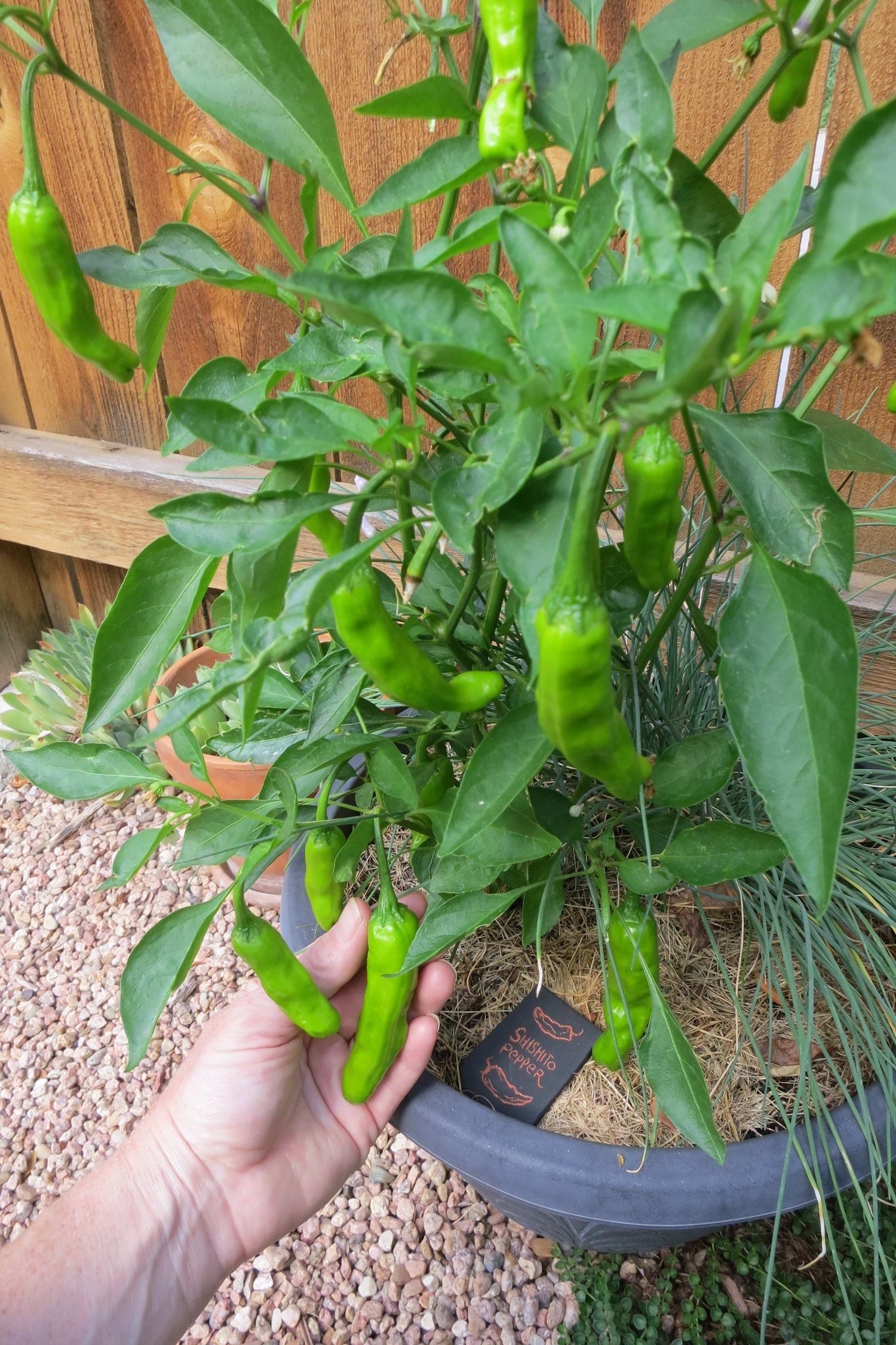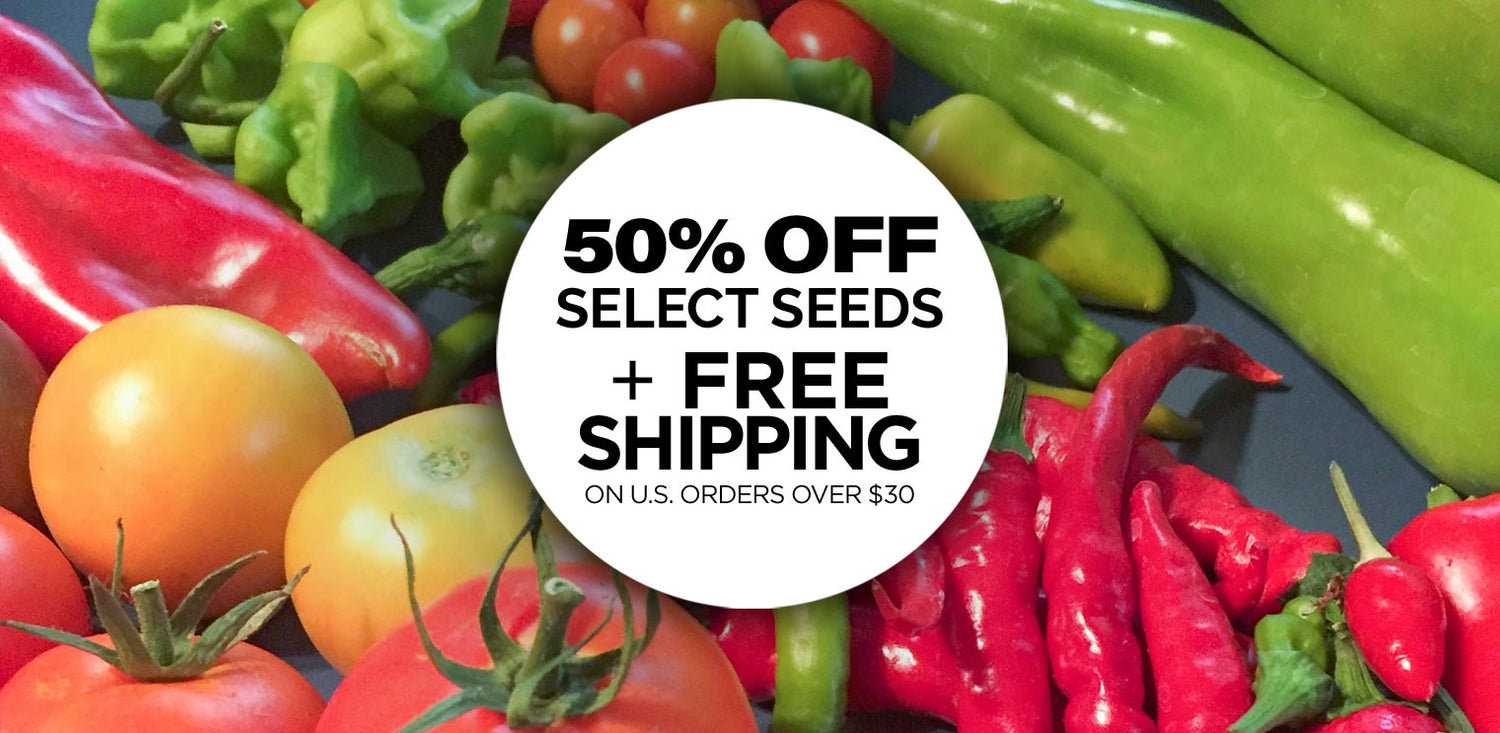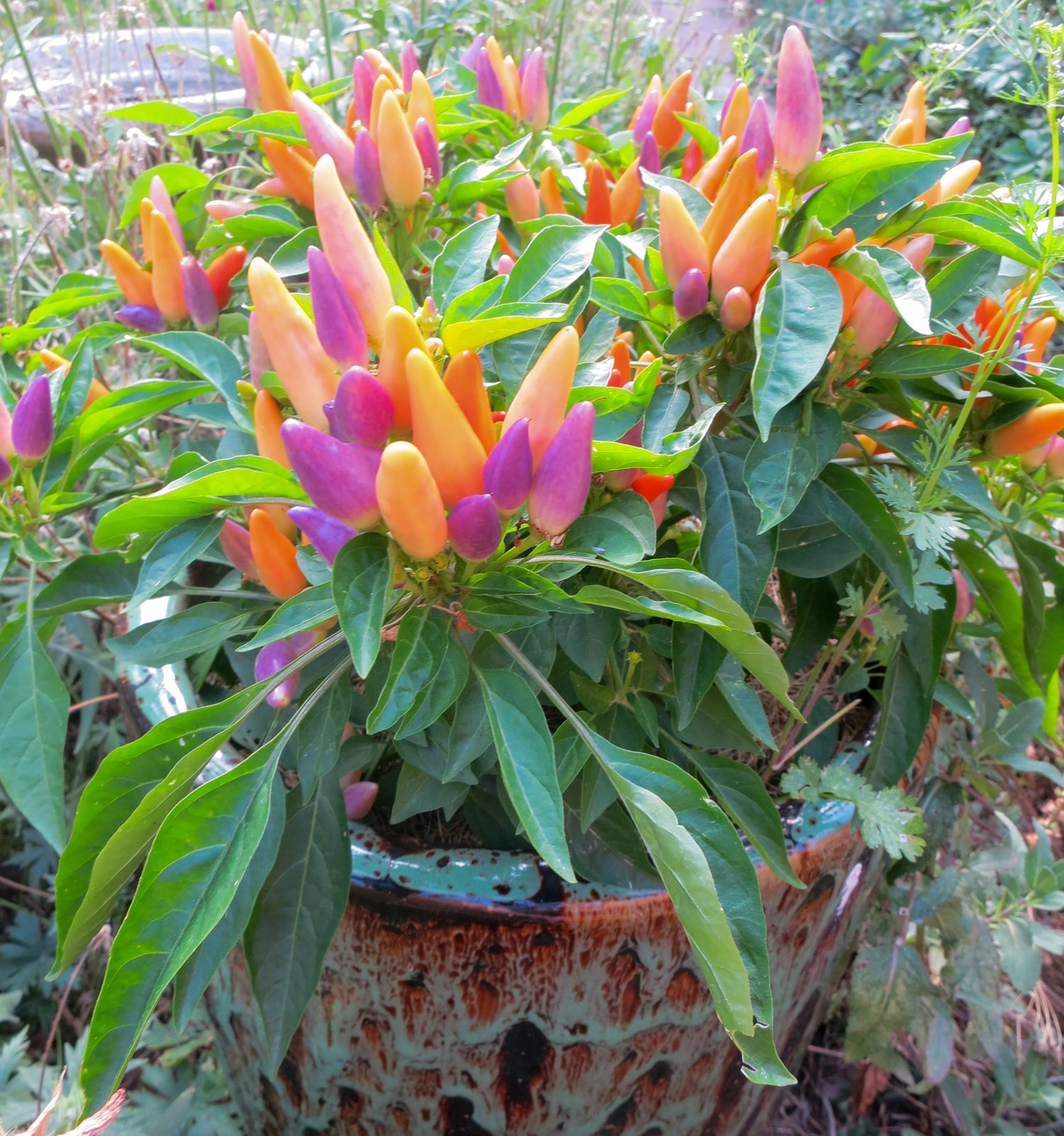 Lacewing Eggs on a Tomato Plant
Lacewing Eggs on a Tomato Plant“Every harmful insect has a mortal enemy.
Cultivate that enemy and he will do your work for you.”
~ Eleanor Perenyi

Plants that Attract Beneficial Insects
We never use pesticides in our garden – instead, we enlist the help of our friends, the beneficial insects – who help us control pests. Planting lots of flowers and herbs to attract pest-controlling insects is one of the most fascinating ideas that is making a comeback amongst gardeners. If you plant lots of native flowers like Goldenrod (shown above) to attract beneficial insects, they will become a permanent and free source of natural pest control in your garden, no poison needed.
Who wants poison in their vegetable garden, anyway?!
Another added benefit to all of these pepper plant companions such as sunflowers is that they also attract pollinators so you get more peppers.

Plants that attract Lacewings:
Lacewing larvae roam around on your plants devouring every aphid they see, including pest eggs, nymphs and adult pests. Attract Lacewings to your garden with all of these pepper plant companions:

Ladybugs and their larvae eat a TON of aphids, eggs, and other pests. You'll find a lot of these plants below are the same plants that attract Lacewigs, mentioned above. Don't kill the baby ladybug larvae, which kind of look like black and orange caterpillars! They are your pepper plant friends. Here are lots of good plants that will atttract these beneficial insects to your garden:
Fern-leaf yarrow, Common yarrow, Carpet Bugleweed, Basket of Gold, Dill, Golden Marguerite, Butterfly Weed, Four-wing Saltbush, Coriander, Queen Anne’s lace, CA Buckwheat, Fennel, Prairie sunflower, Rocky Mt. penstemon, Sulfur cinquefoil, Alpine Cinquefoil, Yellow Marigolds, Tansy, Spike Speedwell, Hairy Vetch

Plants that attract Hoverflies:
Hoverflies look like little bees, they hover and dart away quickly. Also known as Flower Flies, or Syrphid Flies and sometimes called Sweat Bees (although they are not Sweat Bees, see this document). Hover Flies do not sting, and they lay eggs that hatch into aphid eating machines that look like caterpillars... so don't squish all the caterpillars you see, as they could be hoverfly larvae or ladybug larvae! Here are some pepper plant companions that will attract these interesting hovercraft to your garden:
White Sweet Alyssum*, Fern-leaf yarrow, Common yarrow, Carpet bugleweed, Lavender globe lily, Basket of Gold, Dill, Golden Marguerite, Dwarf Alpine Aster, Masterwort, Four-wing saltbush, Purple poppy mallow, Caraway, Feverfew, Coriander, Cosmos white sensation, Queen Anne’s lace, Buckwheat, Fennel, English lavender, Poached egg plant, Statice, Butter and eggs, Edging lobelia, Lemon balm, Pennyroyal, Spearmint, Wild bergamot, Rocky Mt. penstemon, Parsley, Sulfur cinquefoil, Alpine cinquefoil, Gloriosa daisy, Orange stonecrop, Stonecrops, Peter Pan goldenrod, Wood betony, Marigold “lemon gem”, Crimson thyme, Spike speedwell, Zinnia "liliput"

*Organic farmers have long known that planting Sweet Alyssum throughout a lettuce field effectively controls aphids, a major pest of salad crops. Sweet Alyssum attracts beneficial insects including hoverflies, whose larvae each chomp down as many as 150 aphids per day.
(Source: ofrf.org/news/flowers-replace-insecticides-lettuce-production)

Tomatoes also love Marigolds
The pungent scent of marigolds can also repel a variety of pests such tomato hornworms, aphids, whiteflies and thrips. There has also been research that indicated that planting marigolds between tomatoes protects the tomato plants from harmful root-knot nematodes in the soil. So plant marigolds around your tomato and pepper plants for some nice added protection. At the end of the season, you can also dig in the spent marigold plants to help build the soil. Plus, you may get some free volunteers next season to continue to do your garden pest duty for you.

Dill makes a great Trap Crop for Tomato Hornworms:
Companion planting tomatoes with dill is a great way attract tomato hornworms away from your precious tomato plants. Egg-laying hornworms moths prefer dill over the tomatoes so having lots of dill growing in your garden will keep these pests away from your tomato plants. Plus, you can pick the hornworms off the dill as they appear if desired... but our dill patch is so prolific in our garden and self-seeds easily, so we don't mind if some of it gets eaten – we can't use it fast enough anyway! Also, did you know that Hornworms turn into sphinx or hawk moths, also known as hummingbird moths? Dill also attracts Black Swallowtail butterflies to lay their eggs. If you enjoy these amazing creatures in your garden, dill is a nice way to invite them! Dill also attracts hover flies, predatory wasps, ladybugs, and other beneficial insects, so we highly recommend growing it!
Conclusion:
So, in addition to planting peppers in your garden, make sure to include lots of flowers like the ones mentioned above to bring in pollinators and pest-controlling insects and even nematodes for a healthy garden that thrives, naturally.

Birds are also GREAT pest control!
Planting lots of flowers, shrubs and trees near your vegetable garden will bring these beautiful friends to your garden. They eat TONS of insects every day, so they'll help you with grasshoppers, cabbage loopers, cutworms and even aphids and other pests. Put a birdbath in your garden and fill it daily to attract birds, add bird houses and put out bird feeders to entice them to visit and ideally raise babies! We've watched House Wrens feeding their chicks in a birdhouse we hung this summer, and all day long the little Wrens would hop around in our vegetable garden beds snagging little green worms and other snacks. They must have fed their babies hundreds of bugs every day. So include some birdhouses and bird baths in your garden and you're sure to enlist their help! They also love flowers with seeds such as Coneflowers, Sunflowers, Black Eyed Susans, and more.





















